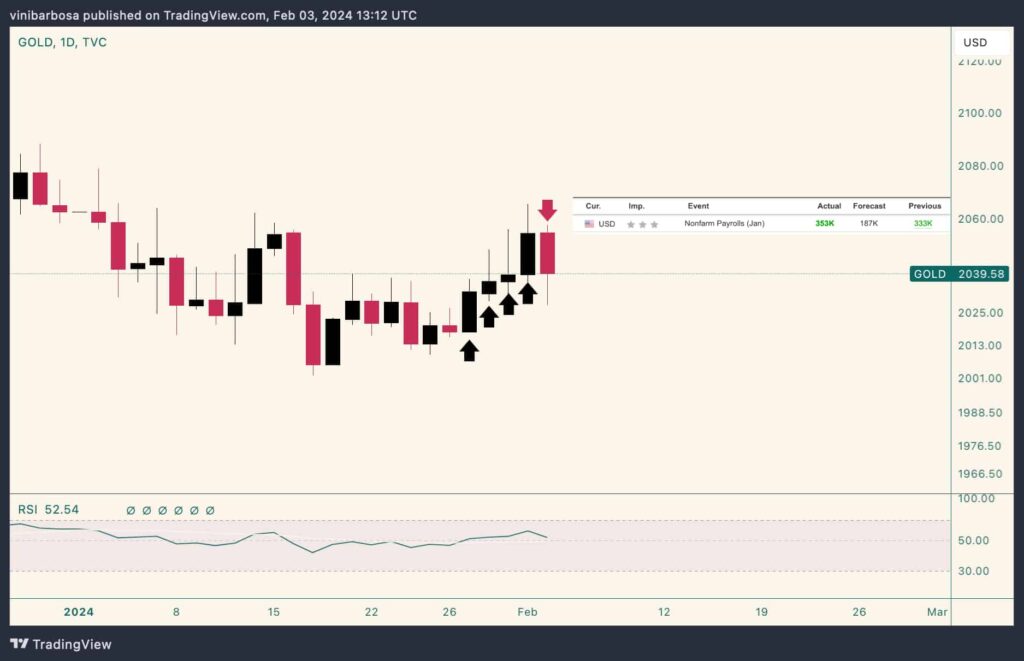Gold had picked up pace in a 4-day price rally last week from January 29 to February 1. However, an economic indicator on February 2 slowed it down, bleeding for a full retracement over its previous daily gains.
Notably, Gold started trading at $2,017.92 per ounce on January 29, closing February 1 at $2,054.55. This 1.81% gain in four days raised investors’ interest, looking for the fifth positive day, which never happened.
The leading commodity closed the week at $2,039.58, fully retracing its previous daily gains. Moreover, Gold traded as low as $2,027.94 on February 2, following positive data from Nonfarm Payrolls in January.
In particular, there were 353,000 new jobs in the United States in January. This was nearly two times higher than the forecasted 187,000 nonfarm payrolls. Thus, it shows a strong growing economy despite the challenges which may influence the financial market.

Nonfarm Payrolls and their impacts on financial markets
Corporate Finance Instituteexplained Nonfarm Payrolls:
“Non-farm payroll represents the change in jobs in the economy over the previous month that does not include farm workers, private household employees, or non-profits. The statistic is released by the U.S. Department of Labor and is a key indicator of the labor market.”
– Corporate Finance Institute
Nonfarm payrolls provide valuable insights into the labor force in the United States that directly impact different markets. Through the number of new jobs, economists can identify trends in inflation, economic growth, gross domestic product (GDP), and more.
Interestingly, the Federal Reserve has been using Nonfarm Payrolls (or jobs) as a leading indicator for its interest rate decisions. On that, the U.S. central bank surprised the market, hinting at a “non-cut” of the rates in March. An interest rate cut was highly expected and forecasted by most financial institutions and traders until January 31’s meeting.
In conclusion, a strong labor market weakens speculative products such as gold, stocks, and cryptocurrencies. Essentially, it encourages the Federal Reserve to keep high interest rates for longer, which may weaken the economy in the future.
Disclaimer: The content on this site should not be considered investment advice. Investing is speculative. When investing, your capital is at risk.
The post Gold bleeds after a 4-day price rally; Here’s why appeared first on Finbold.



